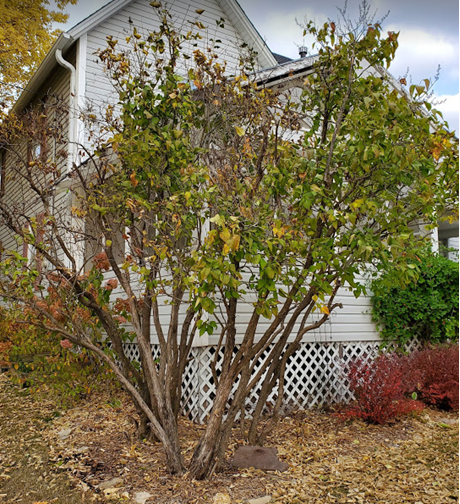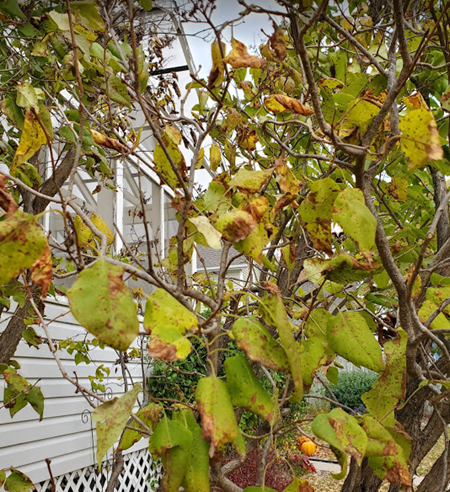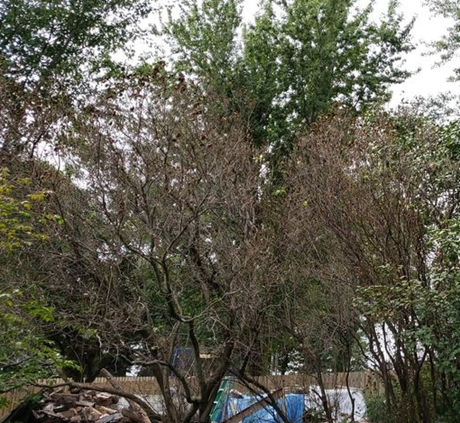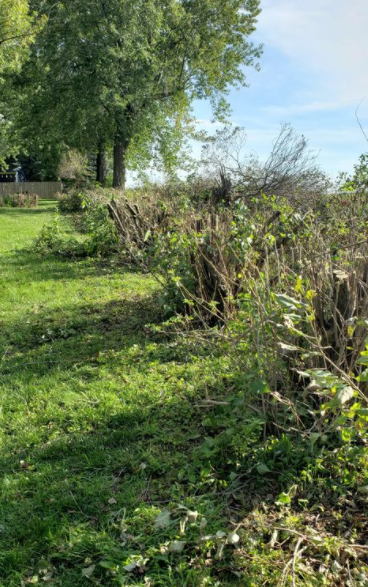Click below to listen to my 2 min. Garden Bite show: Update on Lilac blight
Audio PlayerEarlier this season I talked about lilac blight. So many of my listeners had issues, including me! The University of Minnesota received a bunch of calls of those brown, yellowed leaves and dying branches on mature plants.

The Horticulture department determined that the culprit is a fungus (Pseudocercospora) that causes leaf blight, something I had mentioned on my Facebook page.

The fungus, which lives in soil and plant debris, was found in most samples. Normally it’s not a big deal, but this is 2020 and there was a perfect storm of circumstances that created the outbreak.
First a cold snap in May when leaf buds are forming. If they freeze, the plant will expend more energy to create more buds which weakens the root system at the same time there was no snow cover.
July brought steamy days lending a hothouse effect. Generally very low maintenance, lilacs were severely tested this year. The Star Tribune has a full article in their October 11th edition.

So will they recover? Usually leaf spot diseases don’t kill but experts don’t know for sure. Those less blighted, may have a shot of coming back. Since this is a leaf disease and not a flower disease, it shouldn’t affect the flowers.
Another odd thing is those of you whose shrubs are blooming now!

You will need to clean up those dropped leaves and other debris in the area, don’t compost it. Prune out dead branches and water generously right now. Lay a soaker hose to support the root system. Those roots really took a beating with the stress.

Common lilacs have been most affected. Some of the pictures you’ve sent me look rough. You can prune back lilacs to about a foot tall. The optimal time to do this is early Spring before budding but with the blight issue it’s best to get that debris pruned and cleaned up.
There may be some of you that your lilacs don’t survive, others, give them time, keep the area clean, WATER, WATER, WATER them well going into winter and keep a close eye on them.
